Steel
-
- U.S. MARITIME ASSETS AND NATIONAL SECURITY Maritime Reporter, Jun 1985 #48
A MESSAGE FROM THE CHAIRMAN OF THE SHIPBUILDERS COUNCIL OF AMERICA In my message in the 1983 Annual Report of the Shipbuilders Council, I discussed as a major problem the growing divergence between available maritime assets and those required to meet national security demands.
The discussion included consideration of both the number and types of commercial vessels and shipbuilding capacity and capability.
No solution of the problem was identified or implemented during 1984.
The government's most significant action during the year in relation to the issue was the conclusion that a military deployment under Defense Guidance now requires that the size of the Ready Reserve Force must be sharply increased. A year earlier it had been planned to increase the fleet to 77 vessels by 1988. The revised plan envisions that well over 100 vessels will be required to be on 5 to 10 day readiness basis to meet surge deployment demands for dry cargo. The fact that the plan was required to be changed so soon after the original plan was developed indicates that the count and capacity of useful vessels in the privately owned U.S.-flag merchant fleet is changing very rapidly.
And, this change is not in a positive direction. This is in agreement with our predictions and analyses.
A further major increase in the number of product tankers that must be added to the 16 tanker vessels planned to be in the reserve force is predictable when the shortfall in tanker tonnage required to meet wartime demands is factored into strategic planning. In the development of strategic plans, it is readily apparent that the focus of concern has been directed only toward the availability of shipping capacity.
The loss of shipyard capacity has not yet been dealt with, in our judgment.
In spite of assertions and promises given to the Congress in the summer of 1984, that shipbuilding programs would be proposed by early November, the Administration remained silent about the matter throughout the presidential political campaign.
Recently, a maritime spokesman stated that the previous general policy would continue without a shipbuilding program. The policy is paraphrased as follows: • Naval shipbuilding and shiprepair programs provide ample support to the private industry; • The Jones Act, held sacrosanct, will provide some work for the industry; • Present cargo reservations programs will be continued but not extended; • No programs that involve spending beyond the defense programs will be considered; and • Other than Jones Act vessels, U.S.-flag ships must be acquired abroad.
Thus, the shipbuilding industry must be content with being essentially a captive supplier to the Navy, dependent on only the naval and the predicted small Jones Act markets.
The assertions of our industry that a balanced maritime program, providing support for shipbuilding consistent with the demands of the national security, has again been rejected without adequate consideration of the consequences.
A tenet of present maritime policy is that offshore procurement of all foreign-trading vessels is essential to the national welfare. It follows, therefore, that shipbuilders are expected to desist in arguments for a balanced maritime program, drop opposition to foreign building for ship operators, and accept the fate that results as a consequence.
The owners of the nation's shipbuilding and repair companies expect more from the managers to whom they have entrusted their investments than this policy would provide. Surely, the nation's citizens expect more than silent acceptance of national policy that we sincerely hold as incorrect. Our international allies should, and do, expect more, as their own security depends upon our nation's ability to perform in accord with our claims of military capability.
The shipyards of the nation have made great strides in the past few years to increase capability and efficiency.
The government has been the principal beneficiary of these improvements. Major cost reduction in the procurement of naval ships has occurred. However, we cannot perform miracles. We cannot become internationally competitive in the commercial shipbuilding arena for a number of reasons, of which not the least is the magnitude of government support our competitors receive. The U.S. government by its choice has become our principal customer. Its decisions as to the extent it will support our industry will determine the reality of our defense capabilities.
-
- Armco Restructures Western Steel Division Into Three Groups Maritime Reporter, Sep 15, 1980 #10
Armco recently restructured its Western Steel Division into three operating divisions — Southwestern Steel, Midwestern Steel, and Manufactured Products. The reorganization is a further step in Armco's strategy to establish autonomous business units. Southwestern Steel Division is headquartered in
-
- Rautaruukki Steel = Quality and Profit Maritime Reporter, Feb 2002 #36
Rautaruukki Group of Finland is the largest steel company in Scandinavia with 13,000 employees and an approximate annual turnover of $2.7 billion. While this is, essentially, a small company among the consolidated behemoths of the steel industry, Rautaruukki comes up big in the important areas:
-
- Queen Mary 2 Commences Production With First Steel Cut Maritime Reporter, Feb 2002 #28
Pamela Conover, Cunard Line's president and COO, made history last month when she pressed the button to start the cutting of the first steel for Queen Mary 2 - slated to be the largest, longest, widest, tallest and most expensive passenger ship ever. Queen Mary 2, the first liner to be built in over
-
- SPS Overlay: Fix Steel Decks Faster Maritime Reporter, Oct 2003 #30
eventually corrode and wear. Whether it is 25 months or 25 years, most all marine structures will enter a shipyard for some quantity of steel renewal throughout its life. While the process of removing and replacing steel. particularly decks, is at best a manual and laborious process,
-
- Steel, Ship Prices Soar as Tankers Stay Firm Maritime Reporter, May 2004 #44
Soaring steel prices are now a major concern for leading shipbuilders. Uncertainty about spiraling material costs is even causing some yards to defer new orders, market reports indicate. "The lack of steel in some shipyards of the three major shipbuilding nations is causing newbuildings for 2007 and
-
- Napa Oy Introduces NAPA Steel System For Ship Design Maritime Reporter, Jan 2001 #40
Napa Oy (Ltd.) has introduced the NAPA Steel system, a new tool for ship structural design during the early design stages. NAPA Steel is designed as a quick and flexible tool for use in designing ship structures and in managing the design process from the first sketches up to the classification
-
- Maryland Yard Wins Major Steel Tunnel Fabrication Job Maritime Reporter, Nov 1991 #88
Bethlehem Steel Corporation's Maryland yard, Bethship-Sparrows Point, has signed a letter of intent with Morrison Knudsen to build the tunnel sections for the new thirdtunnel to be installed under Boston Harbor. The job will require 35 million pounds of steel. The subcontract, valued at over $60
-
- Butterworth Introduces Stainless-Steel Tank Cleaning Machine Maritime Reporter, Jul 15, 1978 #35
Butterworth Systems Inc. has developed a reliable, easily maintained stainless-steel machine designed for cleaning tanks. The l i g h t w e i g h t BUTTERWORTH ® LT tank cleaning machine uses rotating jets, which crisscross and overlap the entire inner surface of the tank. Four cycles, from light
-
- 1,000-Foot Bulk Carrier M / V Lewis Wilson Foy Joins Bethlehem Steel's Great Lakes Fleet Maritime Reporter, Aug 1978 #7
The newest 1,000-foot vessel on the Great Lakes, Bethlehem Steel Corporation's M/V Lewis Wilson Foy was recently placed in service. Designed and constructed by Bay Shipbuilding Corp., Sturgeon Bay, Wis. 54235, a subsidiary of The Manitowoc Company, Inc., the Foy is the second 1,000-foot bulk
-
- The 1,000-Foot M/V George A. Stinson Joins National Steel's Fleet Of Ore-Carrying Vessels Maritime Reporter, Sep 15, 1978 #40
The M/V George A. Stinson, the first 1,000-foot super ore carrier in National Steel Corporation's Great Lakes fleet, was christened in Detroit, Mich., on August 21 by Mrs. George A. Stinson, in honor of her husband who is chairman of National Steel. She broke the traditional bottle of champagne
-
- Nippon Steel Completes Floating Tanker Berth For Alaska Pipeline Maritime Reporter, May 1977 #4
Nippon Steel Corp. of Japan has announced the completion of a 2,820-metric-ton floating tanker berth to be installed at the terminus for the Trans-Alaska Pipeline in Valdez, Alaska. The floating berth will be used for the No. 1 berth in Port Valdez, which is situated on the Gulf of Alaska and will
-
 )
March 2024 - Marine Technology Reporter page: 35
)
March 2024 - Marine Technology Reporter page: 35of outgassing and possible explosion. The metallic in a metal case, including common alkaline cells, cannot be lithium, contained inside a thin stainless-steel cylinder, is ex- pressure compensated. tremely reactive with water. Physical Modi? cations to a battery, including means to pres- ? Lithium-ion:
-
 )
March 2024 - Marine Technology Reporter page: 19
)
March 2024 - Marine Technology Reporter page: 19of under-protection, Anode current output at an entire development or even multiple developments. This (pipeline and structure anodes), Effective steel current density can unlock new savings across assets and locations by inform- (including coating breakdown for coated pipelines/structures), ing
-
 )
March 2024 - Marine Technology Reporter page: 17
)
March 2024 - Marine Technology Reporter page: 17Field Gradient Technology (a.k.a., ‘CP stabber’) making direct contact measurement to Data quality and value improves through the use of non-con- the steel structure and the anodes, either by divers or ROVs. tact surveys using ? eld gradient sensor technology. Standard The probe typically consists of
-
 )
March 2024 - Marine Technology Reporter page: 16
)
March 2024 - Marine Technology Reporter page: 16CP an- T cases Magnesium, the anodes are more reactive in the elec- odes must be regularly surveyed to determine when replace- trochemical process than the steel used in pipelines and other ments are required. subsea structures. When connected to a structure, the anodes willingly ‘sacri? ce’ themselves by
-
 )
March 2024 - Marine Technology Reporter page: 15
)
March 2024 - Marine Technology Reporter page: 15, engineered for payloads from 10, 20, 100 and up to 350 pounds. All positioners are available in Aluminum housing (standard) but are offered in Stainless Steel and Titanium for maximum longevity in seawater. ROS positioners offer accuracy from +/- 1.5° to 0.1°. ROS AccuPositioner™ is ideal for Sonar applications
-
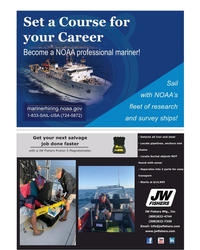 )
March 2024 - Marine Technology Reporter page: 7
)
March 2024 - Marine Technology Reporter page: 7professional mariner! Sail with NOAA’s fleet of research marinerhiring.noaa.gov 1-833-SAIL-USA (724-5872) and survey ships! - Detects all iron and steel Get your next salvage - Locate pipelines, anchors and job done faster chains with a JW Fishers Proton 5 Magnetometer. - Locate buried objects
-
 )
April 2024 - Maritime Reporter and Engineering News page: 39
)
April 2024 - Maritime Reporter and Engineering News page: 39calls the project "A inspections of the relevant parts. Moreover, it is tribute build to a work life at sea". “My capable of measuring the thickness of steel plates model is inspired by a Danish pilot boat, but it could just as by remote operation by the operator. This not easily be a pilot boat from
-
 )
April 2024 - Maritime Reporter and Engineering News page: 38
)
April 2024 - Maritime Reporter and Engineering News page: 38and non-polluting solu- Using its electric line handling tug Castalia, Consulmar towed tion for mooring operations. In addition to mooring, the mul- the steel mooring lines from the vessel to each of the ? ve moor- tipurpose Castalia, which measures 12.5 x 5 m, plays a role in ing buoys. various port activities
-
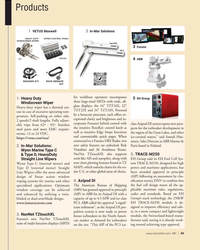 )
April 2024 - Marine News page: 43
)
April 2024 - Marine News page: 43Furuno’s hybrid control with class Azipod DI system opens new pros- the intuitive RotoKey control knob as pects for the icebreaker development in steel parts and meet EMC require- well as intuitive Edge Swipe functions the region of the Great Lakes, and other ments. 12 or 24 VDC. and customizable
-
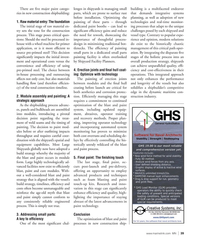 )
April 2024 - Marine News page: 39
)
April 2024 - Marine News page: 39each shipyard and process. This stage poses critical ques- the need for rework, showcasing the vessel type. Contrary to popular expe- tions: Should the steel be processed in- importance of thoughtful process- rience and opinion, modern solutions house with a wheel machine for primer design in minimizing
-
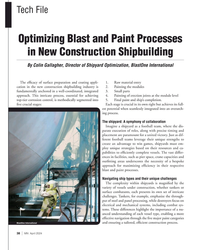 )
April 2024 - Marine News page: 38
)
April 2024 - Marine News page: 38, whether tankers or surface combatants, each presents its own set of intricate challenges. Tankers, for example, emphasize the through- put of steel and panel processing, while destroyers focus on electrical and mechanical systems, including combat sys- tems. These differences highlight the importance
-
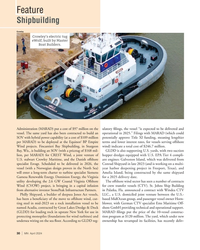 )
April 2024 - Marine News page: 30
)
April 2024 - Marine News page: 30joint venture between the U.S.- has been a bene? ciary of the move to offshore wind, cut- based MidOcean group, and passenger vessel owner Horn- ting steel in mid-2023 on a rock installation vessel to be blower, with German CTV specialist Ems Maritime Off- named Acadia, contracted by Great Lakes Dredge
-
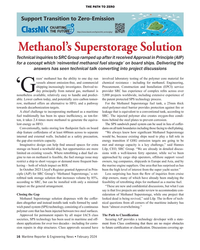 )
February 2024 - Maritime Reporter and Engineering News page: 16
)
February 2024 - Maritime Reporter and Engineering News page: 16. row, methanol offers an alternative to HFO, and a pathway For the Methanol Superstorage fuel tank, a 25mm thick towards decarbonization targets. steel-polymer-steel barrier provides protection against ? re or A chief challenge to incorporating methanol as a maritime leakage that is equivalent to
-
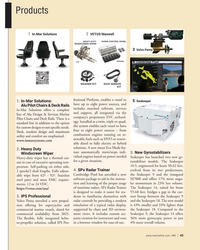 )
February 2024 - Marine News page: 43
)
February 2024 - Marine News page: 43. Stainless Cambridge Pixel has unveiled a new the Seakeeper 9 and the inaugural software package to aid in the instruc- M7000 and offers 17% more angu- steel parts and meet EMC require- tion and learning of the proper usage lar momentum in 23% less volume. ments. 12 or 24 VDC. of maritime radars. SPx Radar
-
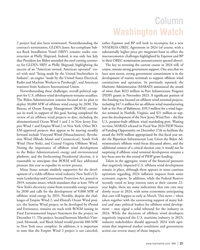 )
February 2024 - Marine News page: 21
)
February 2024 - Marine News page: 21struction at Philly Shipyard. Indeed, it was only last July macroeconomic challenges highlighted by Equinor and BP that President Joe Biden attended the steel cutting ceremo- in their OREC termination announcement quoted above). ny for GLDD’s SRIV at Philly Shipyard, highlighting the The key to reversing
-
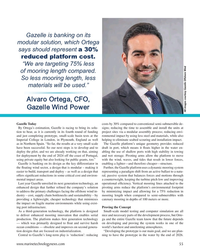 )
January 2024 - Marine Technology Reporter page: 55
)
January 2024 - Marine Technology Reporter page: 55project sites via a modular assembly process; reducing envi- and just completing prototype, small-scale basin tests at the ronmental impact by using less steel and materials, while also Imperial College in London, in Plymouth, England as well helping to eliminate seabed scouring and installation impact. as
-
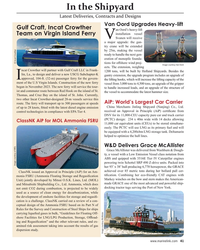 )
January 2024 - Maritime Reporter and Engineering News page: 41
)
January 2024 - Maritime Reporter and Engineering News page: 41is a challenge. ClassNK carried out a review of a con- ceptual design of the Ammonia FSRU based on its Part N of Rules for the Survey and Construction of Steel Ships for ships carrying lique? ed gases in bulk, “Guidelines for Floating Off- shore Facilities for LNG/LPG Production, Storage, Of? oad- ing and
-
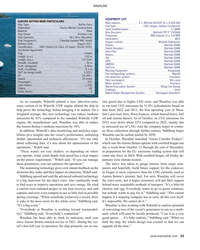 )
January 2024 - Maritime Reporter and Engineering News page: 33
)
January 2024 - Maritime Reporter and Engineering News page: 33Type: RoPax Ferry Fuel type: LNG, biogas, battery (Leclanche) Shipbuilder: Rauma Marine Constructions Total installed power: 17,6MW Material: Steel Bow thrusters: Wärtsilä FPP 2*1500kW Ship Owner: Kvarken Link Propulsion: ABB Azipods (2 × 5.8 MW) Ship Operator: NLC ferry (Wasaline) Generators:
-
 )
January 2024 - Maritime Reporter and Engineering News page: 20
)
January 2024 - Maritime Reporter and Engineering News page: 20coatings systems to protect these stressors that include loose cargo loaded areas from damage. from a few dozen feet. and cathodic protection to the steel substrate. barrier against humidity and corrosive elements. It not only The primer is also stable and durable in challenging envi- prevents substrate
-
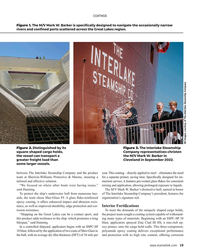 )
January 2024 - Maritime Reporter and Engineering News page: 19
)
January 2024 - Maritime Reporter and Engineering News page: 19than Cleveland in September 2022. some larger vessels. between The Interlake Steamship Company and the product coat. This coating – directly applied to steel – eliminates the need team at Sherwin-Williams Protective & Marine, ensuring a for a separate primer, saving time. Speci? cally designed for im- tailored
-
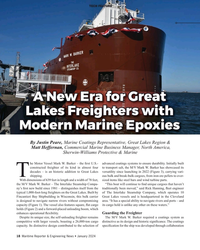 )
January 2024 - Maritime Reporter and Engineering News page: 18
)
January 2024 - Maritime Reporter and Engineering News page: 18shipping. ous bulk and break-bulk cargoes, from iron ore pellets to over- With dimensions of 639 feet in length and a width of 78 feet, sized items like steel bars and wind turbine parts. the M/V Mark W. Barker – The Interlake Steamship Compa- “This boat will continue to ? nd unique cargoes that haven’t
-
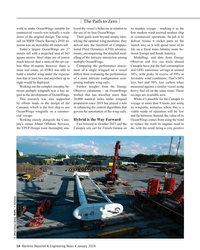 )
January 2024 - Maritime Reporter and Engineering News page: 14
)
January 2024 - Maritime Reporter and Engineering News page: 14xed trans-Atlantic route be- meters tall with a projected area of 363 ments, encompassing the detailed mod- tween Europe and South America. square meters. Steel ships are of course elling of the intricate interaction among Modelling, and data from Energy much heavier than a state-of-the-art car- multiple
-
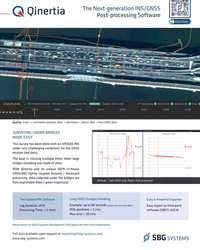 )
November 2023 - Marine Technology Reporter page: 5
)
November 2023 - Marine Technology Reporter page: 5INS under very challenging conditions for the GNSS receiver (red dots). The boat is crossing multiple times three large bridges including one made of steel. With Qinertia and its unique 100% in-house GNSS/INS tightly coupled forward / backward processing, data collected under the bridges are Altitude
-
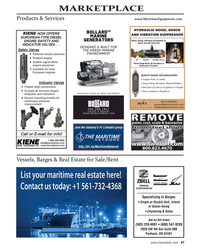 )
December 2023 - Maritime Reporter and Engineering News page: 47
)
December 2023 - Maritime Reporter and Engineering News page: 47for most European engines QUALITY NACOL ACCUMULATORS • Forged shells, no welds Indicator Valves 99kW • Long LasO ng, No Seam, Pleated Bladders Forged steel construction x • We stock 1/5 pint to 15 gallons in Chicago Accepts all common engine x • Sizes available to 40 gallons MANUFACTURED BY MER EQUIPMENT anal
